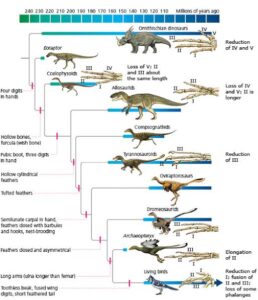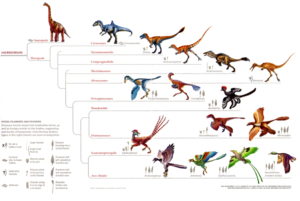Back to: ZOOLOGY 300 Level
Welcome To Class!
Hi my brilliant scholar! I’m truly happy to have you here again. Today’s lesson is like a time machine—it takes us back millions of years to understand how birds and mammals came to be. You’re about to see how reptiles, which once ruled the Earth, gave rise to creatures that can fly in the sky or give birth and care for their young. Let’s get right into it!
Evolutionary Changes From Reptiles To Birds And Mammals
Background: Reptiles as Ancestors
Reptiles were among the earliest amniotes—animals that lay eggs with protective membranes. They adapted well to land with scaly skin to prevent water loss and strong limbs to move on land. Over time, two major lines evolved from reptiles: one that led to birds and another that led to mammals.

Reptile to Bird Evolution
Birds evolved from a group of reptiles known as theropod dinosaurs—the same group that included the mighty Tyrannosaurus rex.
Here are some major changes that happened:
- Feathers: Feathers first appeared for insulation and display before being used for flight. Fossils like Archaeopteryx show both feathers and reptilian traits like teeth and a bony tail.
- Bones: Birds developed lightweight, hollow bones to reduce body weight and allow flight.
- Forelimbs to Wings: The forelimbs of reptiles evolved into wings, while the digits fused to support flight feathers.
- Beak Formation: Birds lost their teeth over time and developed beaks, which are lighter and more suited to different diets.
- Endothermy: Birds became warm-blooded, maintaining a constant body temperature, which supports high energy activities like flight.
Reptile to Mammal Evolution
Mammals evolved from synapsid reptiles, particularly a group called therapsids. These changes took millions of years and involved many transitional forms.
Key evolutionary changes include:
- Jaw and Ear Bones: In reptiles, the lower jaw is made of several bones. In mammals, most of these bones moved to the middle ear, forming the three tiny ear bones (malleus, incus, and stapes) that help with hearing.
- Teeth Specialisation: Mammals developed heterodont dentition—different types of teeth (incisors, canines, premolars, molars) for chewing different kinds of food.
- Hair and Skin Glands: Mammals evolved hair for insulation and skin glands (like sweat and mammary glands) for cooling and feeding their young.
- Endothermy: Like birds, mammals became warm-blooded, helping them survive in varied climates.
- Live Birth and Parental Care: Most mammals give birth to live young and care for them using milk from mammary glands, giving the young a better chance of survival.

Why These Changes Matter
These changes helped birds and mammals become more adaptable and survive in a wider range of environments:
- Birds could fly to escape predators, find food, and migrate.
- Mammals could live in deserts, forests, oceans—even underground—because of their ability to regulate temperature and care for their young.
It’s amazing to see how evolution gradually shaped these creatures into what we know today—from cold-blooded, egg-laying reptiles to intelligent, warm-blooded birds and mammals!
Summary
- Both birds and mammals evolved from different lines of reptiles.
- Birds came from theropod dinosaurs and developed feathers, hollow bones, wings, and beaks.
- Mammals came from synapsid reptiles and developed special teeth, hair, middle ear bones, and the ability to give birth to live young.
- Both groups became warm-blooded, giving them energy and flexibility to thrive in diverse environments.
Evaluation
- What group of reptiles are birds believed to have evolved from?
- Name two skeletal changes that helped reptiles evolve into birds.
- What are the three tiny bones in the mammalian ear, and where did they come from?
- How does endothermy benefit both birds and mammals?
- Mention one major difference between the reproduction of reptiles and mammals.
You did absolutely fantastic, my friend! Isn’t it incredible how the animal world has changed over time? With this knowledge, you’re building a strong foundation in understanding evolution and the deep history of life. Keep going—Afrilearn is with you every step of the way. See you next class!
